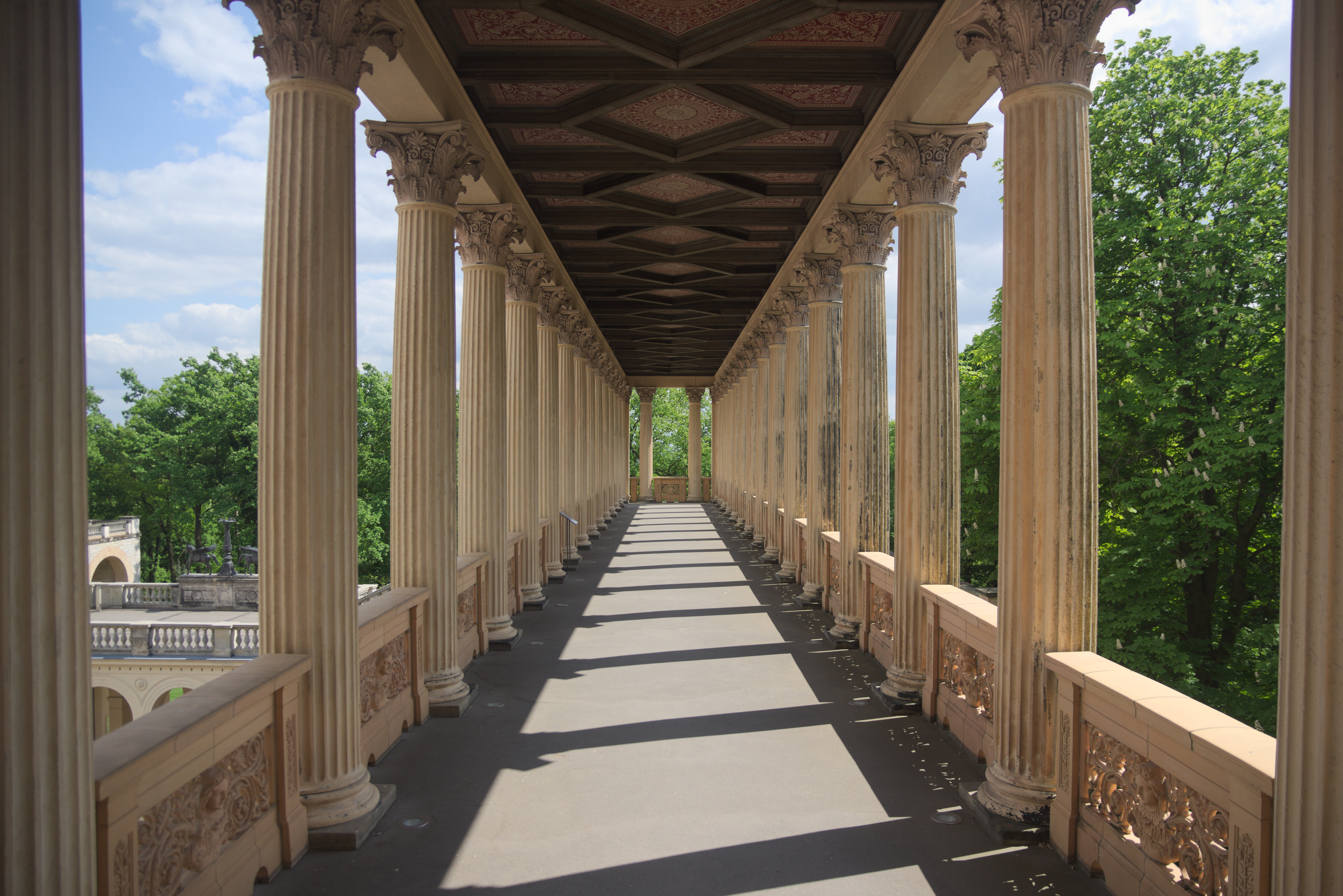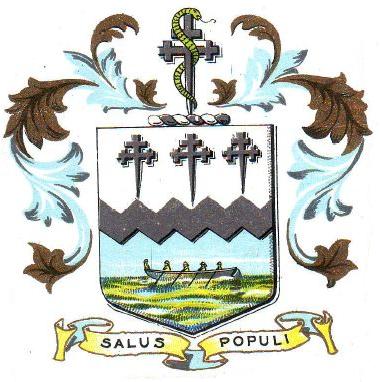|
Garrick Theatre, Southport
The Garrick Theatre is a former theatre, cinema and bingo hall in Southport, Merseyside, England. it is noted for its Art Deco style, and it is a Grade II listed building. History The theatre was built on the site of the Opera House, which had burned down in 1929. It was designed by George Tonge (1876–1956), an architect practicing in Southport, whose work included designing many cinemas. The auditorium seated 1,600, and there was a large stage, to accommodate musicals, operas and ballet. It opened on 19 December 1932, with the play ''Firebird'', featuring Gladys Cooper."Garrick Theatre" ''Cinema Treasures''. Retrieved 2 January 2025."Garrick Theatre" [...More Info...] [...Related Items...] OR: [Wikipedia] [Google] [Baidu] |
Art Deco
Art Deco, short for the French (), is a style of visual arts, architecture, and product design that first Art Deco in Paris, appeared in Paris in the 1910s just before World War I and flourished in the United States and Europe during the 1920s to early 1930s, through styling and design of the exterior and interior of anything from large structures to small objects, including clothing, fashion, and jewelry. Art Deco has influenced buildings from skyscrapers to cinemas, bridges, ocean liners, trains, cars, trucks, buses, furniture, and everyday objects, including radios and vacuum cleaners. The name Art Deco came into use after the 1925 (International Exhibition of Modern Decorative and Industrial Arts) held in Paris. It has its origin in the bold geometric forms of the Vienna Secession and Cubism. From the outset, Art Deco was influenced by the bright colors of Fauvism and the Ballets Russes, and the exoticized styles of art from Chinese art, China, Japanese art, Japan, Indian ... [...More Info...] [...Related Items...] OR: [Wikipedia] [Google] [Baidu] |
Lord Street, Southport
Lord Street is the main high street, shopping street of Southport, in Merseyside. It is long, with a roundabout marking each end of the street. There are many water features, gardens and architectural buildings along the entire street, with a mix of residential, commercial and public buildings. It was laid out in the early 19th century. Southport Lord Street railway station, which opened on 1 September 1884, was the terminus of the Southport and Cheshire Lines Extension Railway. Although it closed to passengers in 1952, the frontage of the building was retained. Influence on Parisian architecture In 1846, Napoléon III, Prince Louis-Napoléon Bonaparte, the future Napoléon III, Emperor of the French, lived for a brief period in lodgings just off Lord Street. There is compelling evidence to suggest the street is the inspiration behind the tree-lined boulevards of Paris. Between 1854 and 1870, Napoléon III orchestrated the reconstruction of the French capital. The medieval cen ... [...More Info...] [...Related Items...] OR: [Wikipedia] [Google] [Baidu] |
Grade II Listed Buildings In Merseyside
Grade most commonly refers to: * Grading in education, a measurement of a student's performance by educational assessment (e.g. A, pass, etc.) * A designation for students, classes and curricula indicating the number of the year a student has reached in a given educational stage (e.g. first grade, second grade, K–12, etc.) * Grade (slope), the steepness of a slope * Graded voting Grade or grading may also refer to: Music * Grade (music), a formally assessed level of profiency in a musical instrument * Grade (band), punk rock band * Grades (producer), British electronic dance music producer and DJ Science and technology Biology and medicine * Grading (tumors), a measure of the aggressiveness of a tumor in medicine * The Grading of Recommendations Assessment, Development and Evaluation (GRADE) approach * Evolutionary grade, a paraphyletic group of organisms Geology * Graded bedding, a description of the variation in grain size through a bed in a sedimentary rock * Metamorphic ... [...More Info...] [...Related Items...] OR: [Wikipedia] [Google] [Baidu] |
Buildings And Structures In Southport
A building or edifice is an enclosed structure with a roof, walls and windows, usually standing permanently in one place, such as a house or factory. Buildings come in a variety of sizes, shapes, and functions, and have been adapted throughout history for numerous factors, from building materials available, to weather conditions, land prices, ground conditions, specific uses, prestige, and aesthetic reasons. To better understand the concept, see ''Nonbuilding structure'' for contrast. Buildings serve several societal needs – occupancy, primarily as shelter from weather, security, living space, privacy, to store belongings, and to comfortably live and work. A building as a shelter represents a physical separation of the human habitat (a place of comfort and safety) from the ''outside'' (a place that may be harsh and harmful at times). buildings have been objects or canvasses of much artistic expression. In recent years, interest in sustainable planning and building ... [...More Info...] [...Related Items...] OR: [Wikipedia] [Google] [Baidu] |
Buildings And Structures Completed In 1932
A building or edifice is an enclosed structure with a roof, walls and windows, usually standing permanently in one place, such as a house or factory. Buildings come in a variety of sizes, shapes, and functions, and have been adapted throughout history for numerous factors, from building materials available, to weather conditions, land prices, ground conditions, specific uses, prestige, and aesthetic reasons. To better understand the concept, see ''Nonbuilding structure'' for contrast. Buildings serve several societal needs – occupancy, primarily as shelter from weather, security, living space, privacy, to store belongings, and to comfortably live and work. A building as a shelter represents a physical separation of the human habitat (a place of comfort and safety) from the ''outside'' (a place that may be harsh and harmful at times). buildings have been objects or canvasses of much artistic expression. In recent years, interest in sustainable planning and building practi ... [...More Info...] [...Related Items...] OR: [Wikipedia] [Google] [Baidu] |
Listed Buildings In Southport
Southport is a seaside town in Metropolitan Borough of Sefton, Sefton, Merseyside, England. It contains 175 buildings that are recorded in the National Heritage List for England as designated listed buildings. Of these, three are listed at Grade II*, the middle of the three grades, and the others are at Grade II, the lowest grade. There are no buildings listed at Grade I. Southport did not develop as a town until the late 18th century. Before that it contained only small settlements and fishermen's cottages. Most of the listed buildings are located to the north of the present town centre and consist mainly of small houses, many of them in a single storey, stucco, rendered or roughcast, and with thatched or slated roofs. As the town developed and grew, its larger buildings were constructed, including villas, shops, churches, and public buildings. The major thoroughfare in the town is Lord Street, Southport, Lord Street, a wide road running north–s ... [...More Info...] [...Related Items...] OR: [Wikipedia] [Google] [Baidu] |
Colonnade
In classical architecture, a colonnade is a long sequence of columns joined by their entablature, often free-standing, or part of a building. Paired or multiple pairs of columns are normally employed in a colonnade which can be straight or curved. The space enclosed may be covered or open. In St. Peter's Square in Rome, Bernini's great colonnade encloses a vast open elliptical space. When in front of a building, screening the door (Latin ''porta''), it is called a portico. When enclosing an open court, a peristyle. A portico may be more than one rank of columns deep, as at the Pantheon in Rome or the stoae of Ancient Greece. When the intercolumniation is alternately wide and narrow, a colonnade may be termed "araeosystyle" (Gr. αραιος, "widely spaced", and συστυλος, "with columns set close together"), as in the case of the western porch of St Paul's Cathedral St Paul's Cathedral, formally the Cathedral Church of St Paul the Apostle, is an Anglican c ... [...More Info...] [...Related Items...] OR: [Wikipedia] [Google] [Baidu] |
Pilaster
In architecture, a pilaster is both a load-bearing section of thickened wall or column integrated into a wall, and a purely decorative element in classical architecture which gives the appearance of a supporting column and articulates an extent of wall. As an ornament it consists of a flat surface raised from the main wall surface, usually treated as though it were a column, with a capital at the top, plinth (base) at the bottom, and the various other column elements. In contrast to a Classical pilaster, an engaged column or buttress can support the structure of a wall and roof above. In human anatomy, a pilaster is a ridge that extends vertically across the femur, which is unique to modern humans. Its structural function is unclear. Definition A pilaster is foremost a load-bearing architectural element used widely throughout the world and its history where a structural load is carried by a thickened section of wall or column integrated into a wall. It is also a purel ... [...More Info...] [...Related Items...] OR: [Wikipedia] [Google] [Baidu] |
Portland Stone
Portland stone is a limestone geological formation (formally named the Portland Stone Formation) dating to the Tithonian age of the Late Jurassic that is quarried on the Isle of Portland in Dorset, England. The quarries are cut in beds of white-grey limestone separated by chert beds. It has been used extensively as a building stone throughout the British Isles, notably in major public buildings in London such as St Paul's Cathedral and Buckingham Palace. Portland stone is also exported to many countries, being used for example at the United Nations headquarters in New York City. Geology Portland stone formed in a marine environment, on the floor of a shallow, warm, sub-tropical sea probably near land (as evidenced by fossilised driftwood, which is not uncommon). When seawater is warmed by the sun, its capacity to hold dissolved gas is reduced; consequently, dissolved carbon dioxide (CO2) is released into the atmosphere as a gas. Calcium and bicarbonate ions within the wat ... [...More Info...] [...Related Items...] OR: [Wikipedia] [Google] [Baidu] |
Historic England
Historic England (officially the Historic Buildings and Monuments Commission for England) is an executive non-departmental public body of the British Government sponsored by the Department for Culture, Media and Sport. It is tasked with protecting the historic environment of England by preserving and listing historic buildings, scheduling ancient monuments, registering historic parks and gardens, advising central and local government, and promoting the public's enjoyment of, and advancing their knowledge of, ancient monuments and historic buildings. History The body was created by the National Heritage Act 1983, and operated from April 1984 to April 2015 under the name of English Heritage. In 2015, following the changes to English Heritage's structure that moved the protection of the National Heritage Collection into the voluntary sector in the English Heritage Trust, the body that remained was rebranded as Historic England. The body also inherited the Historic Engla ... [...More Info...] [...Related Items...] OR: [Wikipedia] [Google] [Baidu] |
Southport
Southport is a seaside resort, seaside town in the Metropolitan Borough of Sefton in Merseyside, England. It lies on the West Lancashire Coastal Plain, West Lancashire coastal plain and the east coast of the Irish Sea, approximately north of Liverpool and southwest of Preston, Lancashire, Preston. At the United Kingdom Census 2021, 2021 census, Southport had a population of 94,421, making it the List of North West England cities and metropolitan areas by population, eleventh most populous settlement in North West England and the third most populous settlement in the Liverpool City Region. The town was founded in 1792 by William Sutton (Southport), William Sutton, an innkeeper from Churchtown, Merseyside, Churchtown, who built a bathing house at what is now the south end of Lord Street, Southport, Lord Street.''North Meols and Southport – a History'', Chapter 9, Peter Aughton (1988) The area was previously known as South Hawes, and was sparsely populated and dominated ... [...More Info...] [...Related Items...] OR: [Wikipedia] [Google] [Baidu] |








